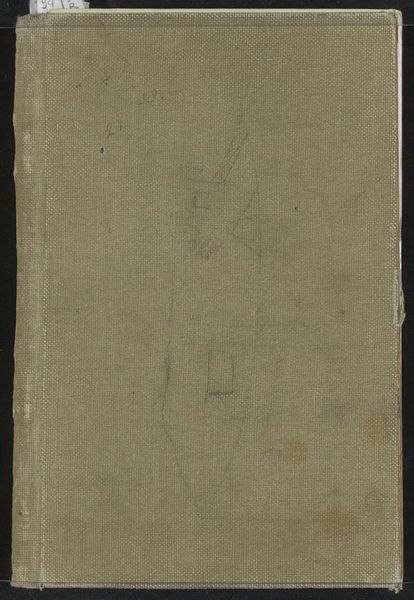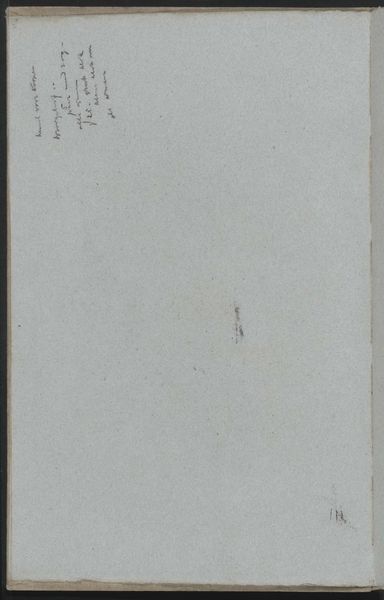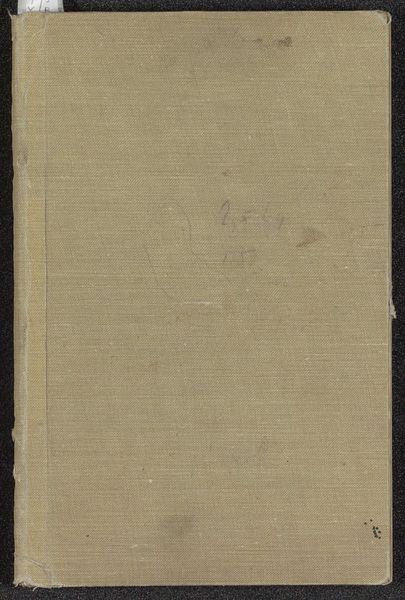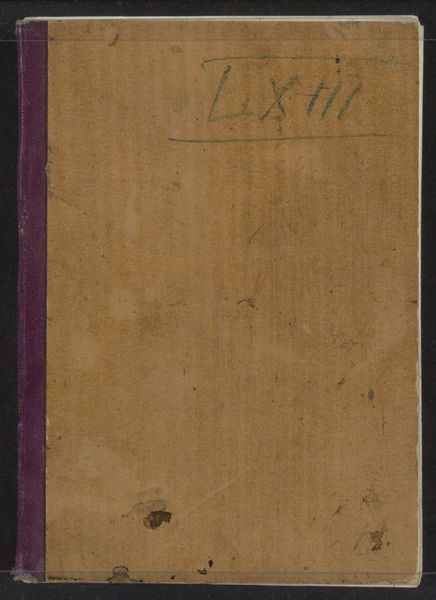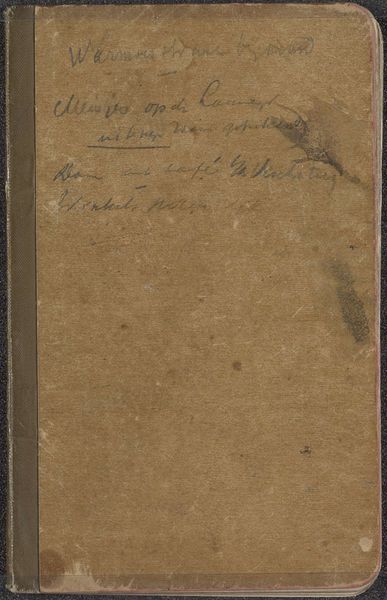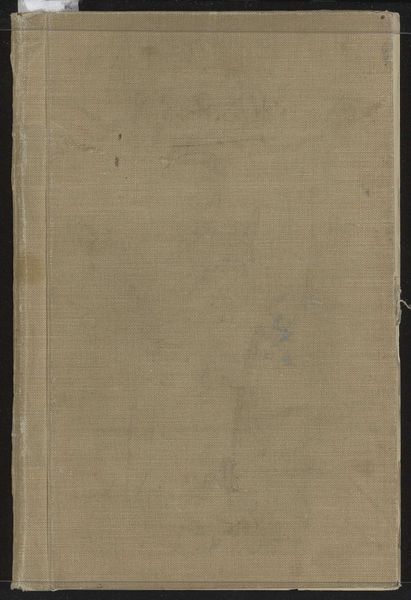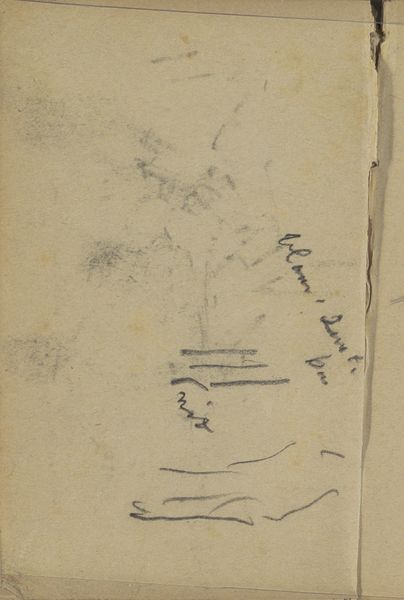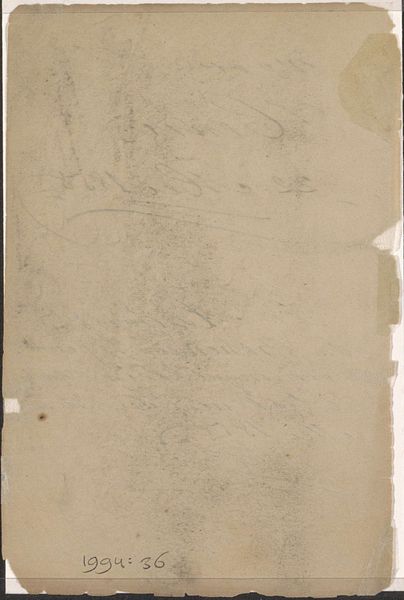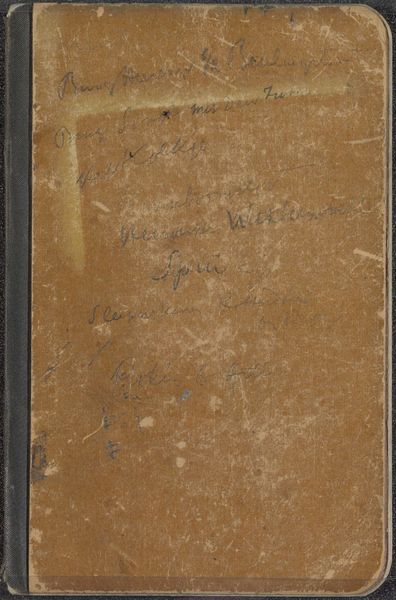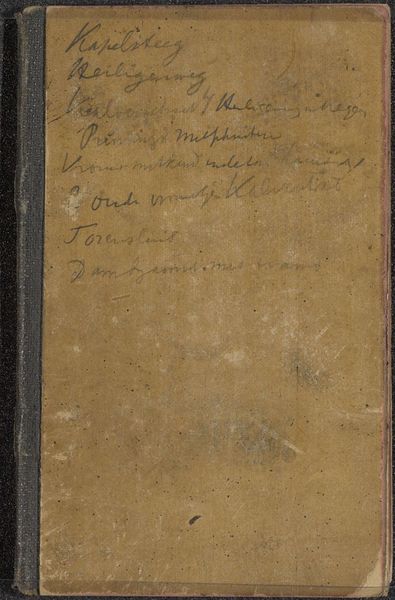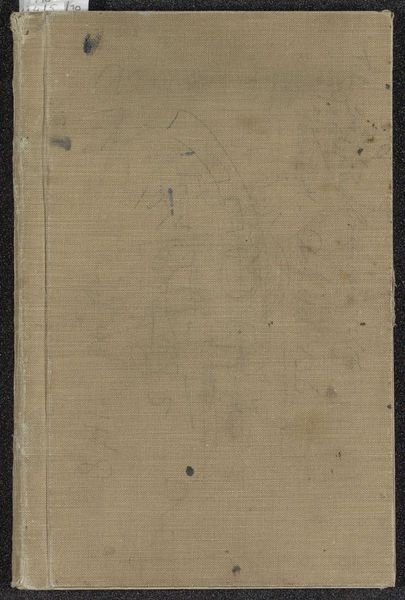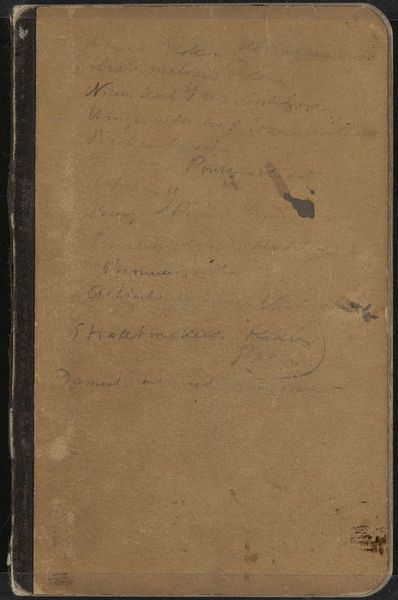
Dimensions: height 218 mm, width 144 mm, thickness 12 mm, width 282 mm
Copyright: Rijks Museum: Open Domain
Editor: This is "Sketchbook with 56 leaves," created between 1890 and 1946 by Cornelis Vreedenburgh. It's a pencil drawing on paper, and it just looks... well, used. The cover is smudged with almost ghostly remnants of previous sketches. What stands out to you? Curator: That very 'use' speaks volumes. Consider the sketchbook itself as a potent symbol: it is a space for transient ideas, fleeting impressions given material form. A safe space for images. The act of sketching implies an intimacy – between the artist, the subject, and the artifact we are looking at. The faded traces suggest not failure, but iterations, layers of seeing, of working through ideas. Editor: That’s a beautiful way to put it! Iterations, like palimpsests. So what do these ‘ghostly’ portraits or impressionistic lines, reveal to us about Vreedenburgh? Curator: Beyond the aesthetic choices, the symbolism behind portraiture is loaded. A portrait is never merely a representation, it's an interpretation, and more so, a construction. Perhaps these impressionistic portraits served as quick studies, rehearsals, and documents about human existence. This one cover protects the record and memory. Does the time range 1890 to 1946 suggest to you any specific historical moments during that period? Editor: World Wars, the rise of modernity… That's fascinating to think about how those global shifts could subtly seep into even the most personal sketches. I guess I had only considered art to be on walls, not held close like this. Curator: Exactly! Consider the emotional resonance this object must have held for the artist; a repository of memories, experiences, and artistic exploration. It transforms from a simple sketchbook into a powerful emblem of creativity and lived experience. It challenges us to think of the purpose of art and documentation. Editor: I hadn't considered that a simple sketchbook could carry such weight! Seeing it as a symbol of artistic exploration, a personal archive, really changes how I view it. Curator: Precisely. It's in these unassuming objects that profound connections to history, memory, and creativity are often found.
Comments
No comments
Be the first to comment and join the conversation on the ultimate creative platform.

